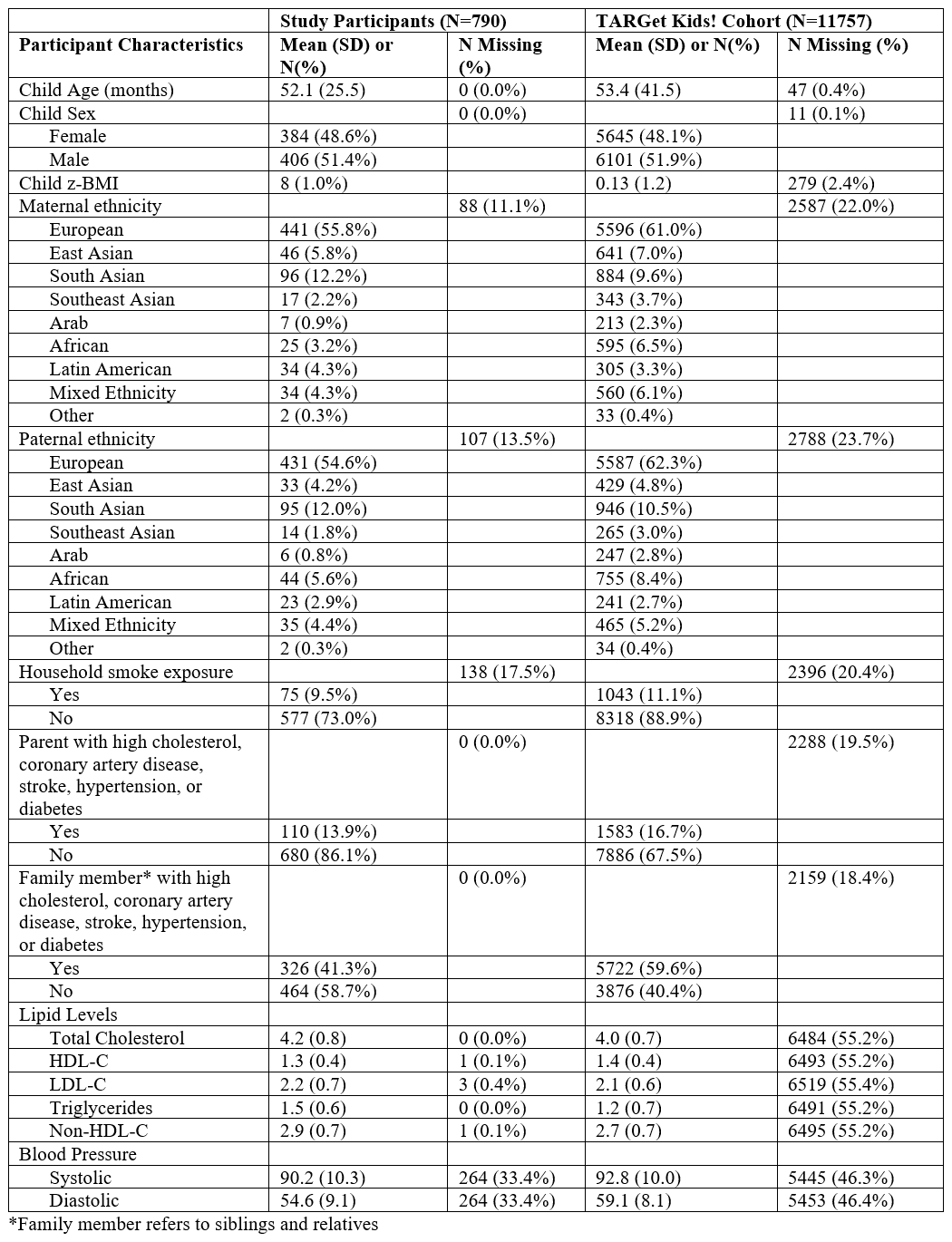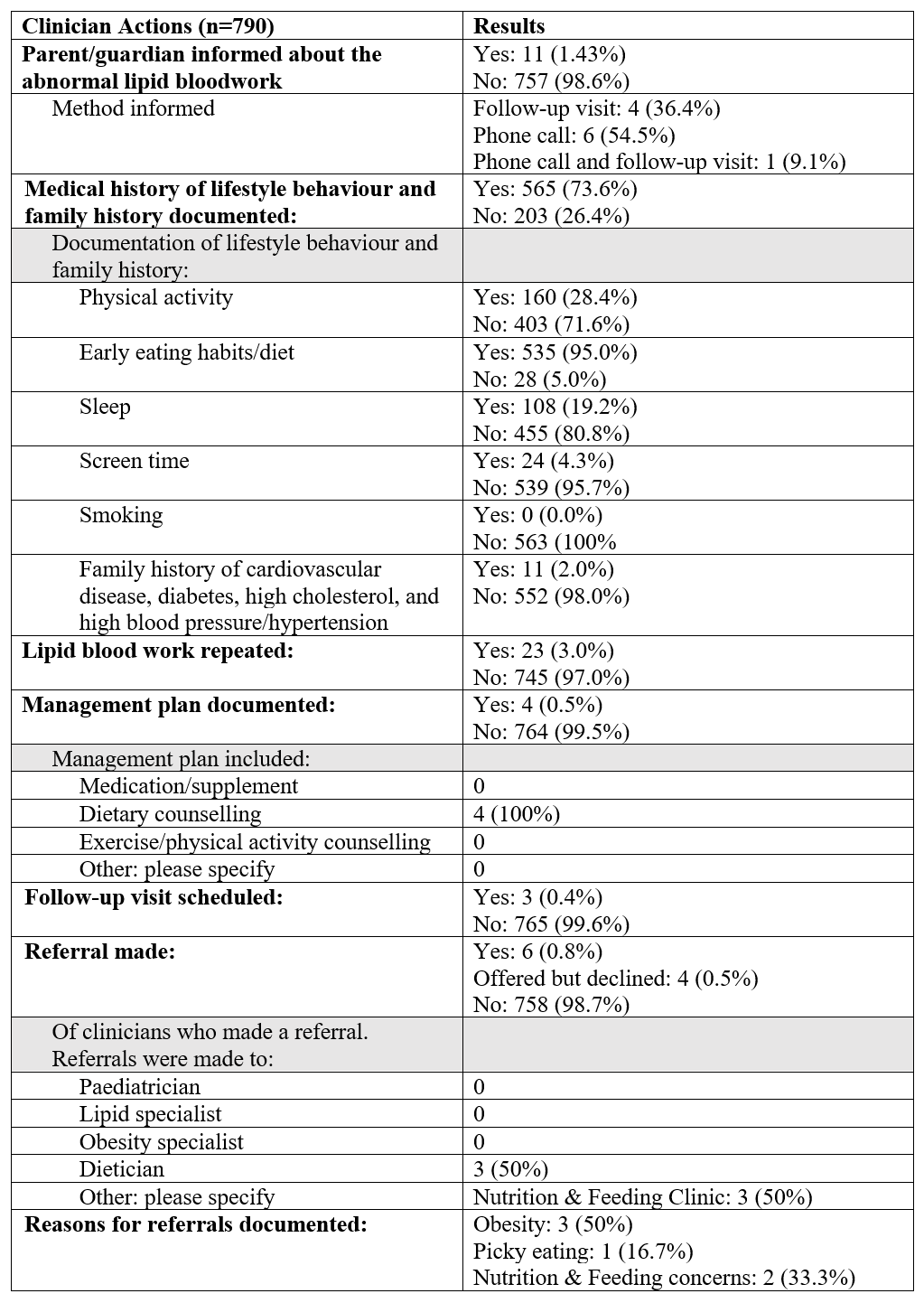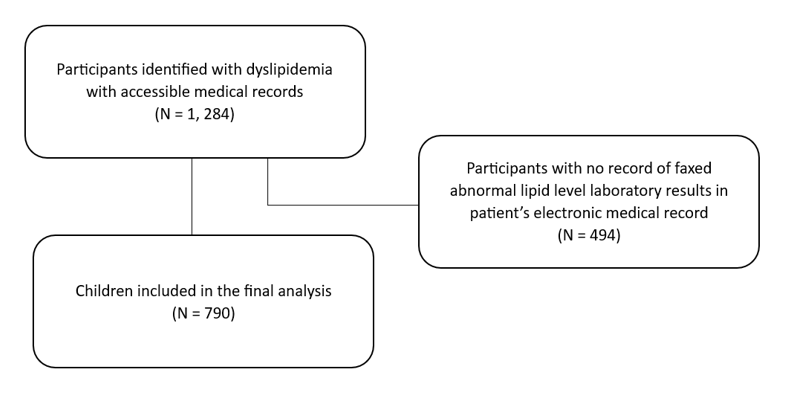General Pediatrics
Session: General Pediatrics 2
240 - Community Clinician Management Patterns of Childhood Dyslipidemia
Friday, May 3, 2024
5:15 PM - 7:15 PM ET
Poster Number: 240
Publication Number: 240.62
Publication Number: 240.62
- KT
Katherine N. Tom, BHSc
Medical Student
McMaster University Michael G. DeGroote School of Medicine
Toronto, Ontario, Canada
Presenting Author(s)
Background: Atherosclerosis begins in childhood and is linked to risk factors, like dyslipidemia, that when left unmanaged may result in adverse health outcomes including heart attack and stroke. Pediatricians are well positioned to identify cardiovascular risk factors, reinforce cardiovascular health behaviours, and promote lifelong cardiovascular health. Previous studies about community pediatric clinician dyslipidemia management practices have been relied on self-report surveys that are limited by recall bias.
Objective: We aimed to quantitatively describe community clinician management practices for childhood dyslipidemia. We hypothesized that there is inconsistent management of abnormal lipid values, which could be a potential target for medical training and public health initiatives.
Design/Methods: We conducted a retrospective cohort study using a convenience sample of participants from the TARGet Kids! registry, a large network of multiple practices providing primary care to children in Toronto, Canada and a longitudinal cohort of children in Toronto, Canada. Children 2 years of age and older were included. The study outcomes were the proportion of clinicians engaging in each facet of community dyslipidemia management, including assessment of lifestyle behaviors and cardiovascular risk factors, informing the family of abnormal lipid values, and documentation of dyslipidemia management plans. Descriptive statistics were completed, reporting the proportion of clinician engagement in management practices.
Results: 790 children with dyslipidemia were seen by primary pediatric care providers after labs revealing dyslipidemia. Clinicians often obtained a medical history regarding lifestyle behaviours (like diet, exercise and screen time) and assessed cardiovascular risk factors (n=565, 73.6%). Physicians rarely informed families about abnormal lipid levels (n=11, 1.43%). Management plans for abnormal lipid levels were rarely documented (n=4, 0.5%). No clinicians referred to pediatric lipid specialists or initiated lipid-lowering pharmacotherapy.
Conclusion(s): Pediatric care providers rarely identified and initiated early management for abnormal lipid levels. Our results may inform the need for improved knowledge translation for published guidelines on the detection and management of childhood dyslipidemia.



